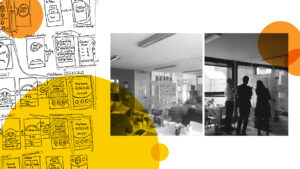October 19, 2022 / Thought Leadership
The Top 5 UX Challenges for Companies
Martin Byrne, ZOO Digital
 The communications revolution has created a world where customer service is more important than ever. Whereas companies in the past could impose their systems, their language and their rules on the general public, the expectation now is that the customer is front and center in everything and it is the job of the seller to meet the client where they are, not the other way around.
The communications revolution has created a world where customer service is more important than ever. Whereas companies in the past could impose their systems, their language and their rules on the general public, the expectation now is that the customer is front and center in everything and it is the job of the seller to meet the client where they are, not the other way around.
This presents challenges for businesses who understand the need to deliver excellent user experiences, but are embedded in an older mindset.
We have helped numerous organizations to embed UX and design thinking into their everyday operations, and to bring their stakeholders along with them. Here, we look at the top five lessons we’ve learned from that experience.
1. Being Customer First
Bigger and more established companies in particular are used to calling the shots. Even typically service-oriented organizations are challenged in today’s customer-first world. But, we are faced with less patience from users and excellent challengers in the field who set a high bar for customer expectations.
UX and more broadly CX is all about the customer. That’s why we test with real people every step of the way, your idea out to testers using usabilityhub.com, usertesting.com, playbookux.com, and in face-to-face interactions.
In addition to this, we keep these core tenets in mind when designing service flows for customers:
-
- Don’t use your words, use theirs.
- Don’t force your users to think – give them a maximum of three options at a time, and if possible avoid choices completely. The best interface is no interface, don’t you love automatic sliding doors?
- Respect the users’ goodwill. Think of goodwill as a currency that you can take from and add to as you bring a user through a journey. Every time you make them work, you reduce it, and every time you surprise and delight, you add to it. Creating goodwill and positive sentiment will get users in the mood to click that all-important confirmation button.
- Test and measure. Test new ideas, test them again until they’re working well and then see how they work by measuring. Keep repeating this process to keep your conversion rates tuned.
2. Being Evidence Based
Evidence is more important than opinion when it comes to UX. Evidence gives you the power to ask for a budget and team because you can provide proof that there’s a problem to be fixed. When we map out user journeys, plot drop-off points and are able to show a pain point that is losing the customer business, then we have almost made our case. We gather that evidence from:
-
- Analytics
- Surveying
- Customer feedback in public reviews and ratings
- Customer service and support call statistics
The last, and perhaps most convincing, piece of evidence we can present is the voice of the customer. There is nothing more powerful than video of a system test conducted with a user where they are shown having obvious difficulties with a process. You don’t need to do lots of these – anything more than seven and you’re seeing diminishing returns. But do them regularly as part of your process.
3. Not Being Persona Focused
Your systems should be a pleasure to use for human beings, no matter what their demographic is. Marketing personas let you create campaigns and target people with more accuracy and bang for your buck. UX personas, if you need them, are more about function; Checking Account User, Returning Shopper, First Time Onboarder etc.
Our experience has taught us that we can ditch the personas and test with humans.
4. Be Prepared to Be Wrong
When it comes to CX and UX, being wrong is great. No really – it means you’ve discovered something through your evidenced-based process. If all your assumptions are right, be worried that you’re not asking the right questions. Set up your experiments to find out new stuff, not to validate what you already have in place.
5. Being Taken Seriously
Embedding UX and design thinking is a huge challenge for any organization and you can’t do it alone. Because the practice will affect everyone, you’ll need buy-in so that you’ve got a whole team behind you and can be effective.
We begin all of our UX projects by identifying the stakeholders (and blockers) who we will work with. We can then bring them through our process and make the case to embrace the need for a good UX process. That method is to show them evidence.
 brief us?
brief us?





